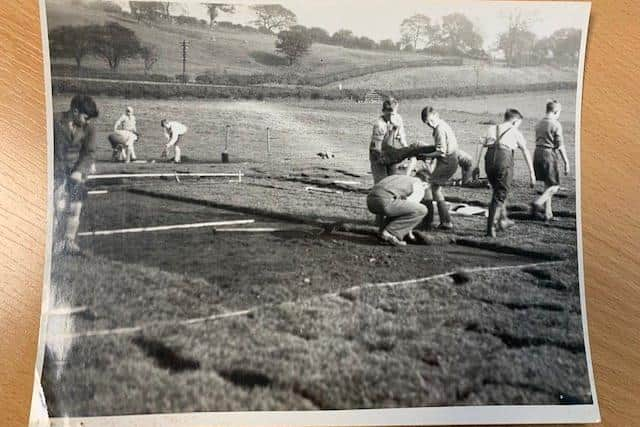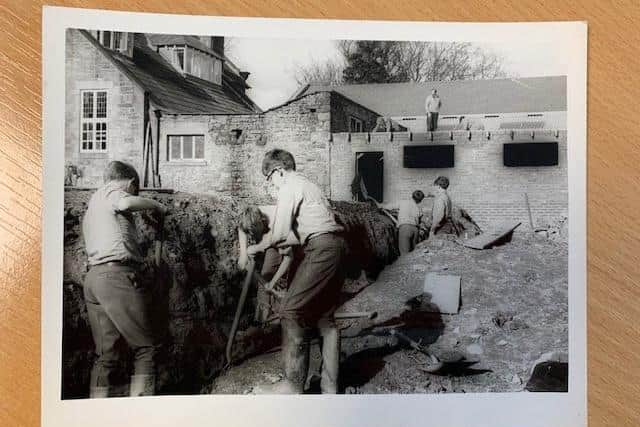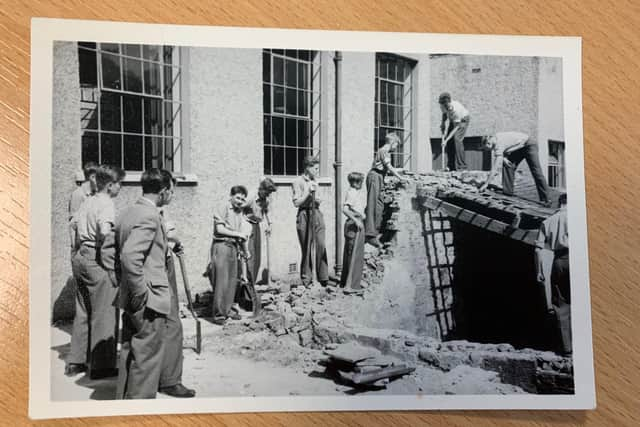Remembering school days in Bentham


The original school was situated in High Bentham at the junction of the Clapham and Burton roads.
It educated the boys of the local area and took a small number of girls from time to time during the 19th century, though it was not until the 1930s that girls were a permanent feature.
Advertisement
Hide AdAdvertisement
Hide AdThe 1870 Education Act introduced state elementary education for all and the original Bentham Grammar School building was purchased by the West Riding Authority as an elementary school, with the grammar school acquiring new premises at Moon’s Acre, between High and Low Bentham, in 1878.


Although numbers fluctuated, the school roll was usually 40-50 pupils and a traditional range of subjects was taught with ambitious students being prepared for entering university.
From the 1870s, a small number of boarder pupils were accommodated in the school.
In 1946, the then headmaster resigned to open his own school, taking with him many of the pupils.
Advertisement
Hide AdAdvertisement
Hide AdThe situation was not an enviable one for a new headmaster in those years of post-war austerity but John Webb and his wife Margaret were exactly the right leaders to take over the ailing school.


In 1948 the school moved again. The beautiful rectory building in Low Bentham, designed in the mid-19th century by the renowned architect Norman Shaw and situated on the banks of the River Wenning, was being sold and the governors of the grammar school were persuaded to buy it.
Over the next 21 years, the Webbs created a very successful school, raising the numbers from 70 in 1946 to 400 by the late 1960s.
During this period there was a constant demand for building work as the rectory was altered to meet the needs of a growing school.
Advertisement
Hide AdAdvertisement
Hide AdMoney was invariably tight and thus developed the spirit of self-help enterprise that came to define the school.


During the early years the rectory’s cottage garden offered children the opportunity to rent a small plot and grow vegetables and fruit or keep hens, selling the produce back to the school kitchens.
The appointment of Joshua Lonsdale in 1947 provided both knowledge and experience of building and he successfully established a tradition of pupils assisting in most of the works undertaken, with pupils being expected to give up 30 minutes a week to work on school projects.
Between 1950 and 1951, pupils assisted in laying the foundations of an assembly hall and in the construction of a dining room and workshop.
Advertisement
Hide AdAdvertisement
Hide AdPupils provided most of the labour required for levelling the playing fields for allow hockey and cricket.
The largest project was the creation of three wooden classrooms between 1955-56, designed by Lonsdale, with pupils doing most of the construction using timber reclaimed from a dismantled railway bridge.
BBC news did a feature on the self-help tradition at the school in May 1956.
In 1961 a block of science laboratories was built along with a senior library in 1964, with most of the final fittings and decoration being the work of pupils.
Advertisement
Hide AdAdvertisement
Hide AdThe headmistress, Mrs Webb, had worked tirelessly to provide a swimming pool on site and in 1967 this was finally opened, pupils having done much of the early work in digging out foundations and in back-filling around the walls.
Although the last major contribution by pupils was the installation of fittings in the new chemistry lab and domestic science room in 1971, individuals continued to offer their time in the public interest.
Pupils created a brick built store room for outdoor pursuits equipment and in 1995, sixth-former Andrew Gardner built a bridge across Eskew beck at the rear of the school, allowing local people to use of a popular footpath that had been impassable and showing the traditions established by the Webbs and Lonsdale had not withered despite the passing of their creators.
Although the school relied heavily on self-help, especially in the early years, it did not neglect service to the wider community.
Advertisement
Hide AdAdvertisement
Hide AdIn the 1960s and early 70s, senior pupils acted as road crossing wardens for local primary school children at the beginning and end of the school day. Others made regular visits to befriend the elderly or to assist in nursery schools.
A number of boys had a regular commitment to work on restoration projects for footpaths in the Yorkshire Dales. All schools produce successful students that excel in various aspects of school life and Bentham Grammar School was no exception with some outstanding results in public examinations.
Bentham also developed fine traditions in music, drama, sport and outdoor pursuits, with many students going on to achieve professional success in their chosen activities.
There can be few schools however that can boast of such a tradition of self-help enterprise as that which developed at Bentham Grammar School after the move to the old rectory. Many old scholars can quite truthfully say “I helped to build that school”.
Advertisement
Hide AdAdvertisement
Hide AdWhen the governors announced Bentham Grammar School was to close in July 2002, there was considerable shock locally.
Although there were many theories advanced as to the reasons, the full story was not known at the time.
A new local history “Bentham Grammar School- The Final Years” has now been produced.
Written by William Stockdale, this history covers the period from 1976 up to closure and tells the story from where an earlier history of Bentham Grammar School left off, providing answers to the many questions asked at the time of closure
Advertisement
Hide AdAdvertisement
Hide AdThe book has 168 pages with just under 100 photographs and costs £12.
Copies may be had from the publisher, Bentham Grammar School Association, c/o W.Stockdale, 111 Slyne Road, Bolton le Sands; email [email protected]. Tel 01524 823632 or by contacting Jack Warbrick on 015242 62031.